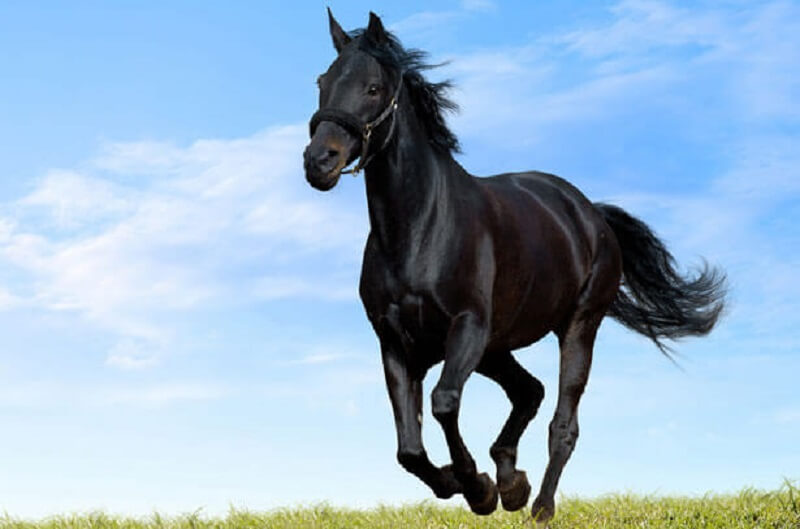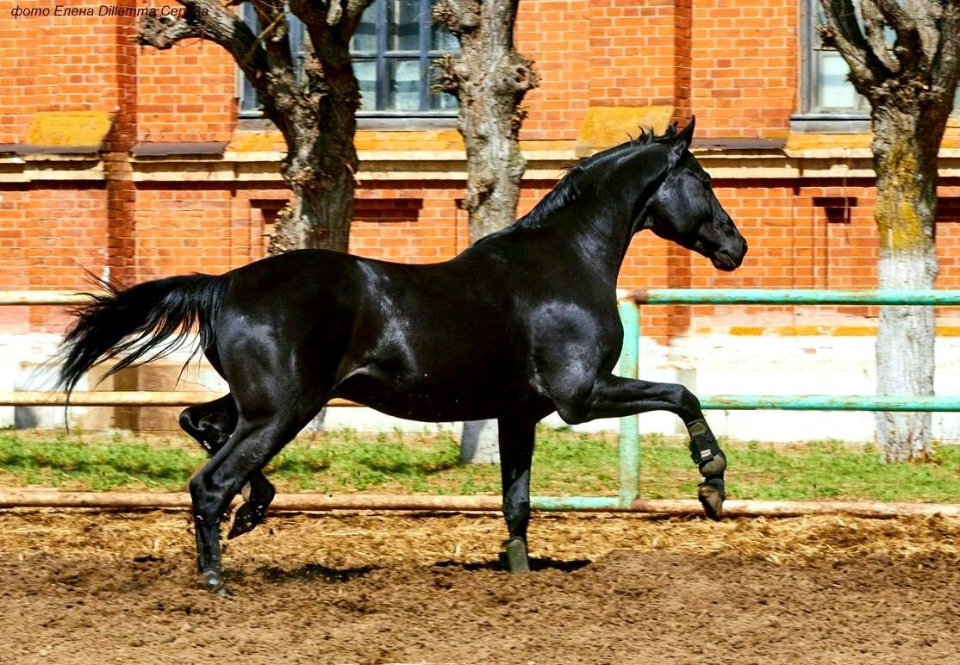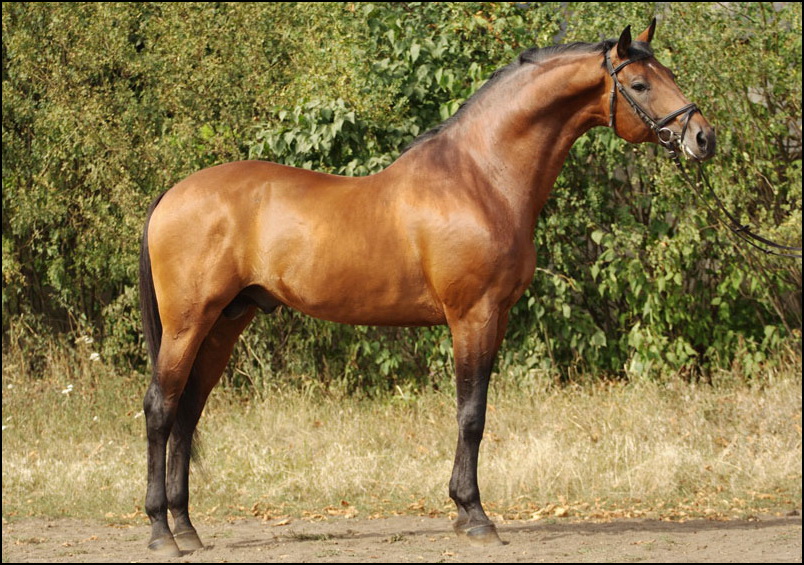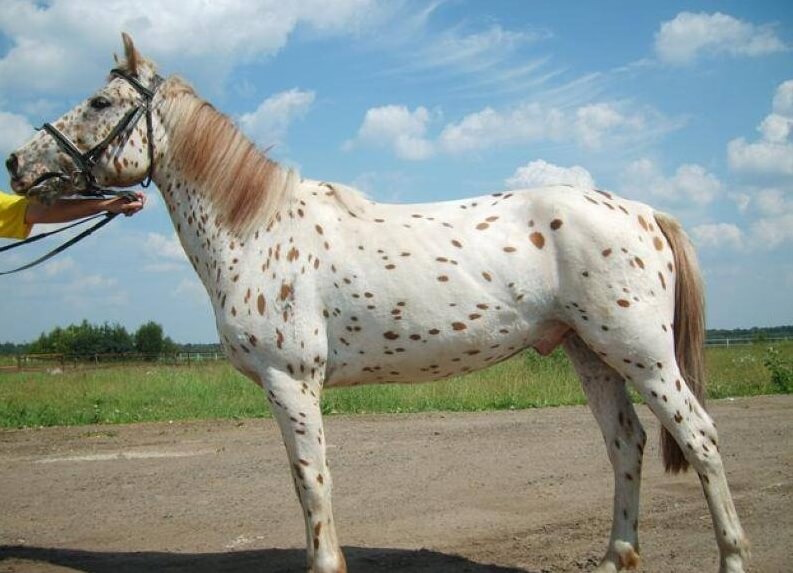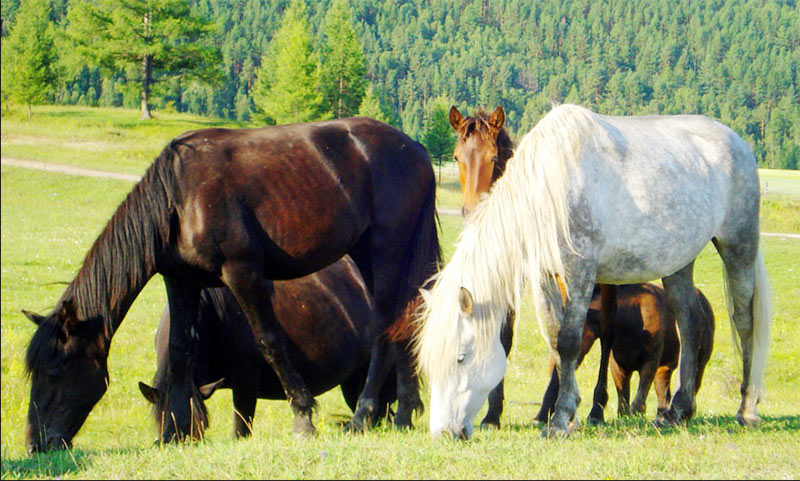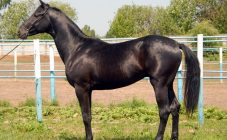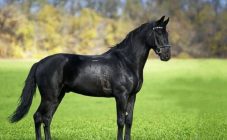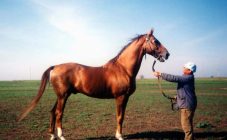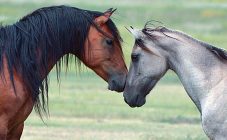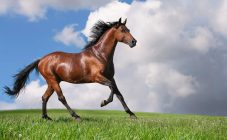Content:
Today Russian horse breeds amaze with their diversity. In addition, these animals always show strength, power and are very useful for farming. Most breeds meet not only these requirements, but also delight with a special appearance.
Most popular breeds
The most common are the following varieties.
Kabardinskaya
The Caucasus is a special mountainous region, which has become the homeland for original breeds. The Kabardinian, which has existed for 3 centuries, is one of the most interesting breeds. She appeared thanks to aboriginal, as well as Arab and Akhal-Teke stallions. Over time, Karabakh blood was added.
Horses cannot be considered tall, because usually they rarely reach 160 cm at the withers. At the same time, the massiveness of the body is noted.
Karachaevskaya
The Karachaevskaya breed is a worthy result of Russian selection, which has been carried out for several centuries. The breed appeared thanks to steppe horses and Arab, Akhal-Teke blood. Karachay horses are very important for the Caucasian peoples, because they help herd cattle, make long journeys and carry out field work. Sometimes horse-type Karachais are used in equestrian tourism and peculiar local games, races at various distances. This breed has endurance and vigor.
Bashkir breed
In Transbaikalia, there is also an aboriginal breed that is Bashkir. She managed to get used to the severe frosts, because even in winter the horses grazed in the steppes. Horses can shovel snow with their hooves to feed on snowy grass. Bashkir horses took part in the Patriotic War of 1812 and were known as playful, brave, obedient. This character continues today.
Yakut breed
Yakut horses are among the most northern. In winter, their coat can grow up to 15 cm. In addition, there is a thick undercoat, which guarantees resistance even to the most severe frosts.
In Yakutia, horses can be kept on pasture even in winter. In addition, they show resistance to long hikes without the slightest rest, equestrian games and competitions. Sometimes animals are bred to obtain quality meat and milk. During the lactation period, mares can produce more than 2500 liters of valuable milk.
Horses of the Budyonovsky breed
The Budennovskaya breed was created in 1948. SM Budyonny contributed to the appearance of such thoroughbred horses.
Among all horse breeds in Russia, Budenovskaya is considered one of the most worthy. Her main breed differences:
- increased resistance to adverse conditions of detention;
- optimal riding qualities;
- agility and the ability to quickly cope with any tasks.
Today the Budenovskaya breed is universal, which is why it is so important for equestrian sports and other areas.
Russian horse
The Russian riding horse appeared thanks to Count A.G. Orlov-Chesmensky. His main task was to create a breed that would be ideal for military operations and even riding on arenas. By the end of the 19th century, Russian riding horses, distinguished by their graceful appearance and docile character, began to win in Russian and international exhibitions. After the revolutionary events in Russia and the Second World War, the breed practically disappeared, but since the 1980s. its reconstruction began. Now such horses in the Altai Territory are considered one of the best.
Orlovskaya
The Oryol horse is an amazing horse that became the owner of world records in races. Such a trotter is a worthy pride of horse breeding throughout Russia. These horses are graceful, valiant, good-natured and loyal.
The Oryol trotter was named after Prince G.G. Orlov, who in 1778 built the Khrenovsky stud farm, where he transported the best horses of various breeds, which were previously bred in the Mediterranean and various Asian countries.
The description of the trotter is amazing:
- growth at the withers reaches 160 cm;
- powerful dry build;
- thick and soft coat;
- wide forehead;
- ears are small;
- straight profile with a slight hump;
- long neck and legs.
The Oryol horse is one of the most worthy in all of Russia.
Ukrainian horse
The Ukrainian riding horse is recognized as one of the most worthy. She has the right movement and can show dynamism in strong and fast jumps. Many breeders have noted her lively temperament. Currently, work continues on the selection and selection of horses in order to improve the characteristics.
The main differences are:
- fighting character;
- growth at the withers reaches 175 cm;
- beautiful expressive head and long neck;
- long straight back;
- strong legs, characterized by pronounced joints, tendons, smooth hooves.
The Ukrainian riding horse undoubtedly deserves popularity.
Russian heavy trucks
Russian heavy trucks are worthy horses for active agricultural work. As a rule, these horses are unpretentious, fertile, energetic. The name of the breed speaks for itself, because a horse can pull a load weighing up to 20-26 tons. Some experts are sure that a heavy draft horse is an ideal heavy-harness horse, the care of which will be as easy and fast as possible.
Transbaikal curly
The Trans-Baikal Curly Horse has existed since 1940, when its appearance was documented. It has Mongolian roots, as it originates from Transbaikalia. And today, among the horses of Primorye, it is the curly Zabaikalskaya that stands out to a greater extent.
Horses can please with their amazing stamina and powerful body build. In addition, they are ready to adapt to almost any conditions of detention and even to harsh weather conditions. In winter, horses can graze in pastures, because they are ready to eat almost all feed.
The curly-haired horse has a very different appearance from other breeds. They have strong strong legs and a long body. Such differences of the Trans-Baikal horse make it possible to count on its successful maintenance and amazing help.
Altai
Altai horses are native to the mountainous region of the same name in Russia. Horse breeding has been successfully developing in this area since the days of the ancient nomads. Altai nature ideally promotes the development of horses at the expense of meadows, mountain onions, river valleys.
The main differences between the Altai horse:
- average height at the withers;
- long powerful torso;
- wide chest;
- strong legs with strong hooves.
It may seem that the horse is unsightly, but in reality it can adapt to almost any conditions of detention. Horses can even carry out transport and cargo work, despite the mountains in the area.
At present, the breeding of horses of the Altai breed is concentrated in the southern part of the Altai Territory. In the central and northern parts, you can find horses with an admixture of trotting and Don breeds.
Terskaya
The Terek breed is versatile, so such horses can be found in the Samara region and other regions of Russia. The horses are distinguished by their attractive appearance. In addition, they can be used for riding and harnessing. Currently, horses are truly worthy representatives in Russian cattle breeding. This species appeared more than 65 years ago and is still being improved. The main differences between horses:
- strong and athletic build;
- a head with a concave profile, and the horses are especially graceful;
- growth reaches 154 cm;
- the withers are developed, which smoothly passes into a wide back;
- an even croup with a short lumbar part, which is the main difference in the appearance of the horses;
- dry and developed legs.
Tersk horses in the Smolensk region and other parts of Russia are ideal for horseback riding and horse races. In addition, they can be trained, thanks to which they successfully participate in circus acts.
Russian trotter
The Russian trotter is a breed that appeared at the beginning of the 20th century thanks to the Oryol breed, crossed with the American trotter and the Dutch Friesian. As a result, it was possible to create a breed that pleases with a beautiful appearance and amazing speed. Initially, the horses could not please with a decent speed, but over the past couple of decades, unsystematic crosses of Russian and American breeds have been carried out. As a result, the horses' agility was improved and even their exterior was transformed. Now the breed cannot be called purely Russian.
Donskaya
The Don breed is a worthy variety of horses. The horses are large and tall, healthy and unpretentious in terms of keeping conditions. They are ideal for creating cavalry regiments and mounted police.
The ancestor of the Don breed is the steppe horse. Active selection took place in the 18-19 centuries. The steppe horse was crossed with Turkish, Persian, Karabakh and Turkmen breeds, thanks to which today its special appearance and amazing agility are celebrated.
Tavdinskaya
Among the horses of the Kaluga region and even the northern regions of Russia, many note the Tavda breed. The northern draft horse is widespread in the Sverdlovsk, Perm and Tyumen regions. Horses show resistance to harsh climates and minimal living conditions, but feeding and caring for them must be at a decent level. Tavda horses can live in the swampy and forest taiga regions of Russia, and they are almost always successfully used in cattle breeding and farming.
Tavdinka perfectly tolerates even the most severe frosts. Despite the meager winter food, she can remain well-nourished and efficient.
Horses are short, but they are characterized by:
- deep body;
- wide chest and croup;
- developed muscles;
- dry strong legs with strong ligaments, hooves.
The mares are fertile and with a well-developed maternal instinct.
Buryat
The popularity of the Buryat stallion cannot be disputed. This breed has been bred since ancient times. At the same time, the influence of the Mongolian breed has long been noted.
The Buryat breed is considered ideal in the following directions:
- horseback riding;
- sled trips;
- production of meat and milk.
The breed has a short but frequent stride. Usually, when traveling long distances, it is possible to overcome 5-6 km in 1 hour. At the same time, Buryat horses overcome 11-14 kg at a trot, and 20 km at a gallop in 1 hour.
In June - July, mares produce about 11 liters of milk per day.
Obvinskaya
The Obvinskaya breed is considered primitive, as it appeared as a result of natural selection. No selection has been made for this horse.
It is believed that these horses appeared during the reign of Peter the Great, that is, in the 18th century. In any case, the accusa horses are forest animals. Before the Oryol trotters, they were considered the best for harness work, but even now they are used for the same purposes.
Nogai
Nogai horses became the progenitors of many modern horse breeds in Russia. They are initially distinguished by their adaptability to various conditions and amazing speed, thanks to which they are successfully grown and actively work for the benefit of people.
Russian silver horse
The Russian silver horse, with its silver mane and surprisingly beautiful appearance, also deserves special attention. It is easy to maintain and can be used for many different purposes. She is considered a worthy horse.
Thus, the variety of horse breeds in Russia is amazing, and each variety turns out to be worthy thanks to the correct natural selection or successful selection.
